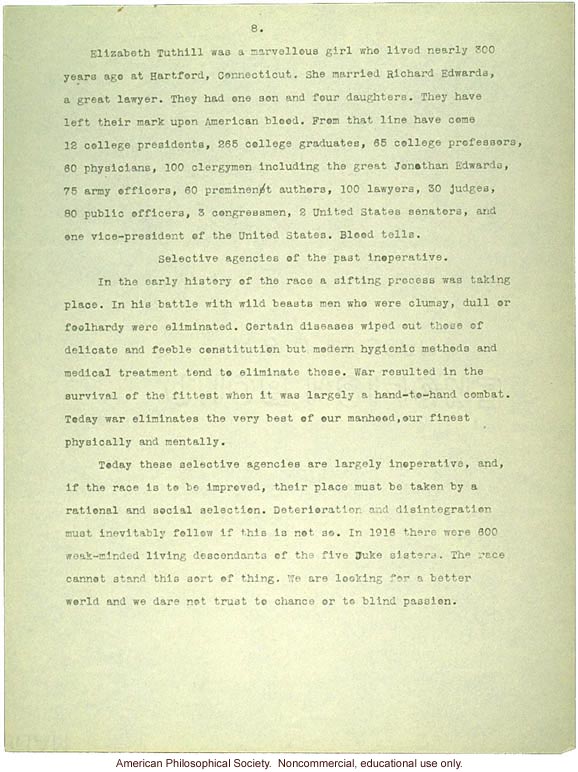[page number] 8. [end page number]
Elizabeth Tuthill was a marvellous girl who lived nearly 300 years ago at Hartford, Connecticut. She married Richard Edwards, a great lawyer. They had one son and four daughters. They have left their mark upon American blood. From that line have come 12 college presidents, 265 college graduates, 65 college professors, 60 physicians, 100 clergymen including the great Jonathan Edwards, 75 army officers, 60 prominent authors, 100 lawyers, 30 judges, 80 public officers, 3 congressmen, 2 United States senators, and one vice-president of the United States. Blood tells.
Selective agencies of the past inoperative.
In the early history of the race a sifting process was taking place. In his battle with wild beasts men who were clumsy, dull or foolhardy were eliminated. Certain diseases wiped out those of delicate and feeble constitution but modern hygienic methods and medical treatment tend to eliminate these. War resulted in the survival of the fittest when it was largely a hand-to-hand combat. Today war eliminates the very best of our manhood, our finest physically and mentally.
Today these selective agencies are largely inoperative, and, if the race is to be improved, their place must be taken by a rational and social selection. Deterioration and disintegration must inevitably follow if this is not so. In 1916 there were 600 weak-minded living descendants of the five Juke sisters. The race cannot stand this sort of thing. We are looking for a better world and we dare not trust to chance or to blind passion.


